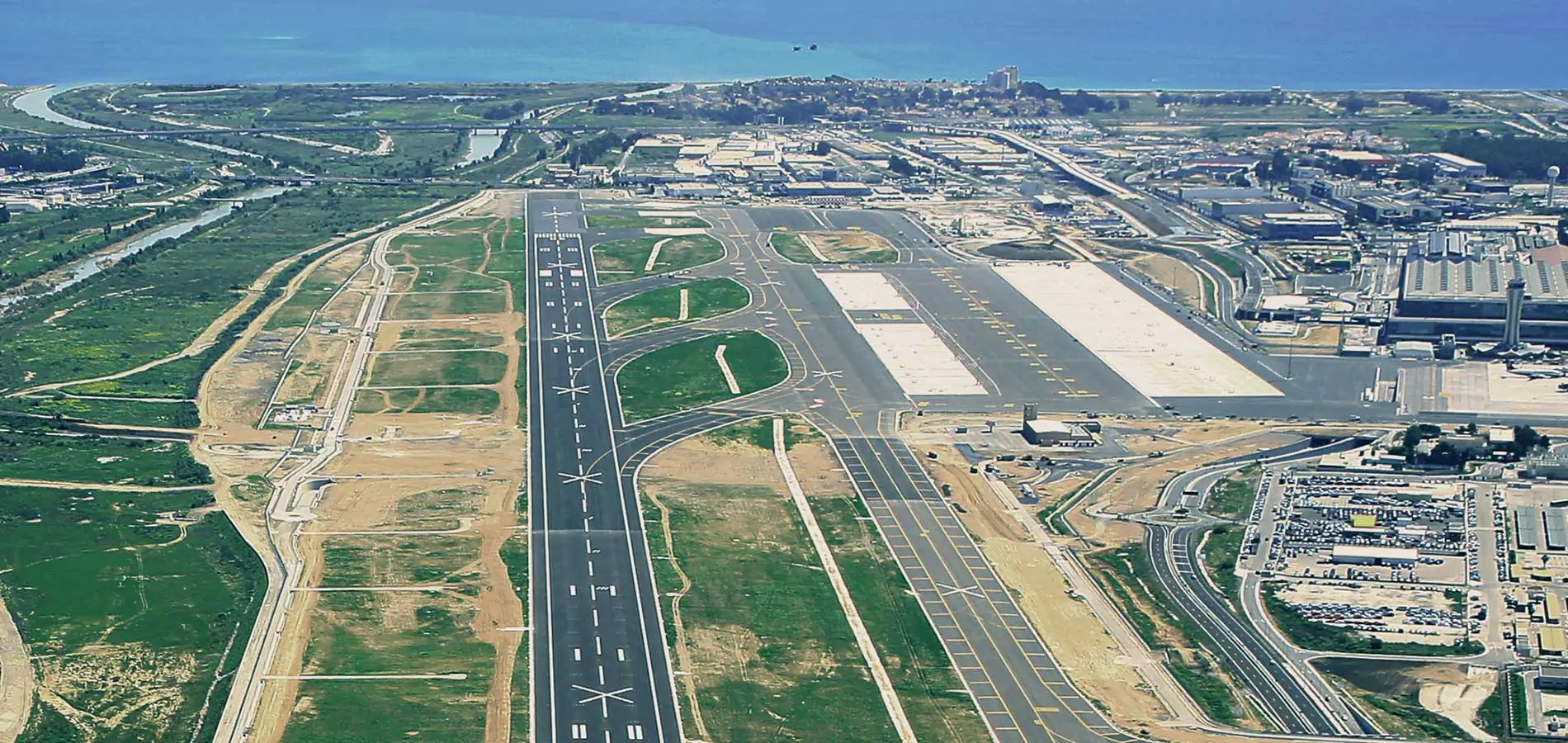Runways and airfields
The runway is the most important part of an airport as it allows aircraft to take off and land safely. The rest of the airfield elements, rapid exit taxiways, taxiways, lay-bys, etc., are designed and constructed to expedite aircraft traffic on the ground and maximise the number of operations that can be carried out on the runway.
Runways are oriented according to the wind pattern of the area, the lateral component of the wind being limited by regulation for the safety of take-off and landing operations. In addition, to avoid jeopardising aircraft landing and take-off operations, runway headlands and approach lines must be free of any obstacle that could hinder such operations.
The runway is the element that limits the maximum size of aircraft that can operate at an airport, as its geometric dimensions, width, and length depend on the minimum clearance requirements for aircraft to land and take off safely.
The runway’s length must provide the airspeeds for heavy aircraft to achieve airlift during take-off and braking during landing. Runways have a Runway End Safety Area (RESA) whose primary purpose is to reduce the risk of damage to an aircraft making a landing that is too short or too long.
Large aircraft, fully loaded with fuel and passengers, require runways of at least 2.5 km to take off and land safely. However, runways at major airports are often longer than 3 km. At the same time, the minimum runway width is 60 m.
In this respect, Sando Construcción has the know-how and experience to build airstrips. It has extended the second runway at Adolfo Suárez Madrid-Barajas Airport and the second runway at Malaga Airport, among others.
Runways are the smooth, flat, paved surfaces at large airports or grass or dirt at small airfields. The materials used are also strongly conditioned by the area’s climatic conditions.
The most commonly used runway pavements at airports are flexible, consisting of a structure formed by superimposed layers of bituminous materials, granular materials and soils, which may eventually also incorporate cement-treated layers, and rigid pavements, consisting of a concrete slab supported on lean concrete.
The choice of airport runway pavement depends on factors such as subgrade soil properties, the magnitude of loads to be supported, landing gear geometry, frequency of loads, climatic conditions, construction and maintenance costs, or structural behaviour.
Equally important are lighting signage and marking. They must be suitable for safe taxiing, take-off and landing manoeuvres, even at night or when visibility is reduced.
In addition to these aspects, when designing and constructing runways, it is necessary to consider their drainage capacity and that of the surrounding terrain since the presence of water modifies the friction characteristics of the surface, increasing the risk of the pilot losing control of the aircraft.
The correct upkeep and maintenance of the airport runway pavement and the rest of the facilities will be crucial for the safety of the whole. An activity that Conacon Sando carries out at different airports.

Runways and airfields
Building the tracks that connect to the mobility of the future
Runways and airfields
Committed to quality and sustainability in the materials used to construct and maintain flight platforms to ensure maximum safety.
We construct and maintain runways and airfields using quality techniques and materials that integrate environmental sustainability criteria both in the elements used in the pavements and the lighting and signage The main objective is the safety of the facilities, professionals, and passengers. Sando Construcción has five decades of experience in the sustainable construction of infrastructures, as does Conacon Sando for predictive maintenance and upkeep.